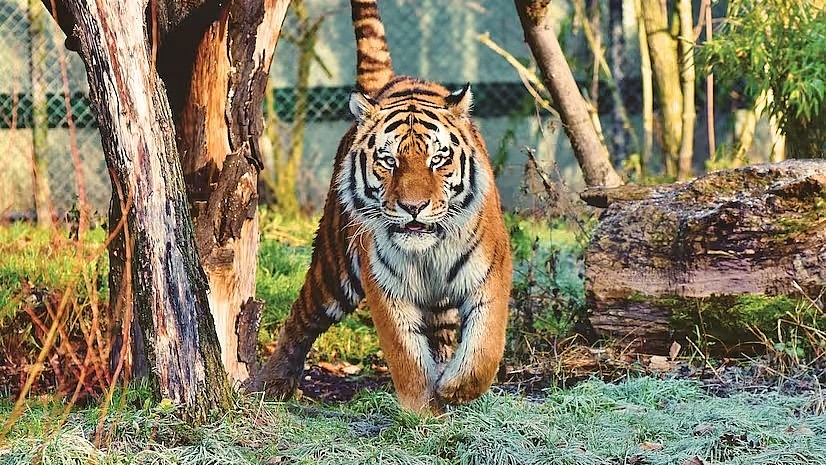50 Years of Project Tiger: India Earns Its Stripes by Restoring the Roar
 |
| Photo: Pexels |
Prime Minister Narendra Modi on Sunday said India did not believe in conflict between ecology and economy but gave importance to the co-existence between the two.
The protection of wildlife was a universal issue, Modi said, launching the International Big Cat Alliance (IBCA), which was born out of a July 2019 message when he had called for an alliance of global leaders to obliterate demand and firmly curb poaching and illegal wildlife trade in Asia.
The IBCA will focus on the protection and conservation of seven major big cats of the world — tiger, lion, leopard, snow leopard, puma, jaguar and cheetah — with range countries harbouring these species.
Presenting the vision for tiger conservation in the next 25 years, he also released a booklet titled Amrit Kaal Ka Tiger Vision.
He was speaking at the inaugural session of the commemoration of 50 years of Project Tiger at Karnataka State Open University in Mysuru.
Citing census data that showed the tiger population in India stood at 3,167 in 2022, from 2,967 in 2018, he said: “The tiger numbers we have reached shows that this family of ours is growing. This is a moment of pride, not just for India but for the world as well.”
Pointing out that cheetahs had become extinct in India decades ago, he referred to the recent initiative where big cats were brought to India from Namibia and South Africa and said it was the first successful transcontinental translocation of the big cat.
He also highlighted that four cubs had been born from these cheetahs at Kuno National Park in Madhya Pradesh.
“It is heartening that at the time when we have completed 75 years of Independence, 75 per cent of the world’s tiger population is in India. It is also a coincidence that the tiger reserve in India is 75,000 square (sq.) kilometre (km). And in the last 10-12 years, the tiger population has also increased by 75 per cent,” he said.
The project
On April 1, 1973, the Indira Gandhi government declared the tiger the national animal and launched a centrally sponsored scheme — Project Tiger — to ensure the survival and maintenance of the tiger population in specially constituted tiger reserves throughout India.
The initiative was aimed at increasing the tiger population on the brink of extinction in the 1970s. There were just 1,411 tigers in India in 1972.
According to estimates, India had 40,000 tigers in the wild at the end of the 19th century. Their numbers declined drastically in the 20th century due to rampant trophy hunting and habitat destruction. As a result, tiger hunting was banned in 1968.
To protect wild animals, birds, and plants and to cater to issues related to ecological and environmental security, the government also passed the Wildlife (Protection) Act, 1972.
When launched, Project Tiger covered nine reserves across 18,278 sq. km. At present, there are 53 tiger reserves spanning 75,000 sq. km. Today, with 3,167 tigers, 75 per cent of the global wild tiger population is in India.
In the last four years (until 2022), Rs 1,047 crore has been allocated under the project. About 97 per cent of the allocated budget was also released by the Centre.
 |
| Prime Minister Narendra Modi at Bandipur Tiger Reserve on Sunday. Photo: PTI |
The conflict
Five decades after the implementation of Project Tiger, poaching is still the most common threat to big cats in India.
The National Tiger Conservation Authority’s (NTCA’s) mortality data from 2012 through 2022 reveals that of the 762 tiger deaths investigated during the period, about 55 per cent were natural deaths, followed by poaching (25 per cent). Seizure (14 per cent) was the third highest cause of death in tigers. The rest attributed to unnatural non-poaching deaths.
Additional Director General of Forests and Member Secretary of NTCA, S P Yadav, said that even though there has been a significant reduction in tiger poaching due to better technology and protection mechanism, it remains a threat, besides habitat fragmentation and degradation.
“Tigers can die due to consumption of urea also. All tiger deaths are considered an incident of ‘poaching’ unless proven otherwise,” Yadav told Business Standard.
In the first three months of this year, tiger deaths are at a three-year high. A total of 52 tigers have died as of April 3, according to data from NTCA, the agency responsible for maintaining the details of each tiger death in India.
This year, the monthly average mortality rate is about 17, against 10 recorded in the past decade. Moreover, 1,157 tigers have died since 2012.
When asked about Project Tiger’s objective for the next 50 years, Yadav said, “The goal would be to have a viable and sustainable tiger population in tiger habitats based on a scientifically calculated carrying capacity. I am not assigning a number (to it) as we cannot increase the tiger population of the country at the same pace because that will increase conflict with human beings.”
A total of 169 human deaths were also recorded due to tiger attacks for the period January 2018-June 2021, according to the Ministry of Environment data.
Recommended
 Economy
Economy
"Europe important strategic region, Germany one of our most important partners": Indian PM Modi
 Economy
Economy
Finding Solutions for Businesses to Effectively Leverage FTAs
 Economy
Economy
Vietnam: A Golden Opportunity for Korean Investors
 Economy
Economy
Ample Room for Vietnam, US Business Cooperation
 Economy
Economy
Effective Boost of Investment Flow from Japan to Vietnam
 Economy
Economy
Pakistan Ranked Fifth Highest in Illegal Migration to Europe
 Economy
Economy
